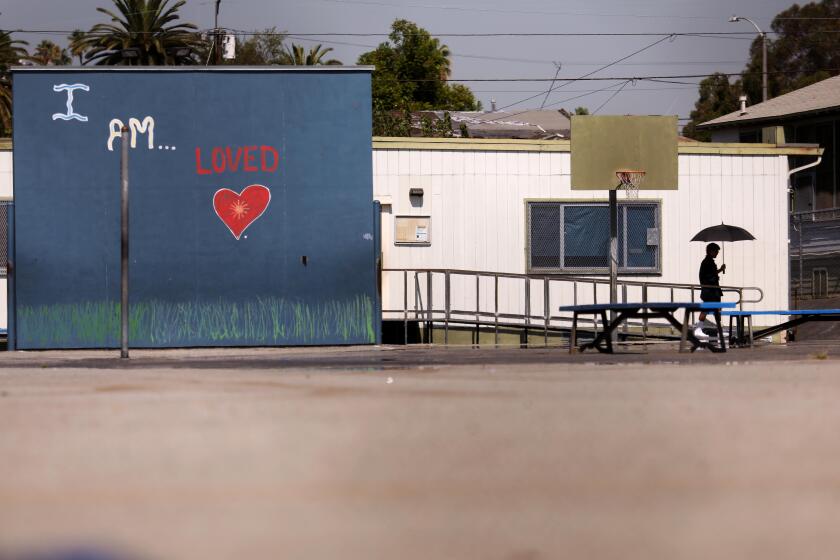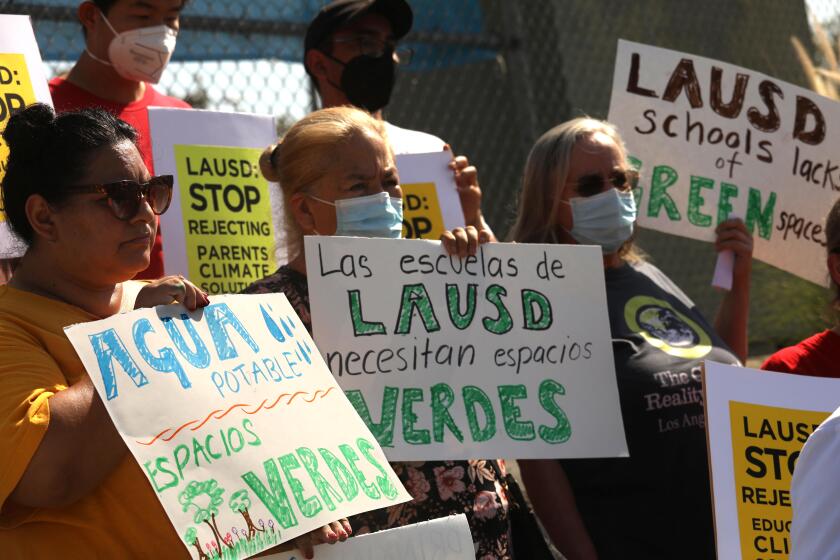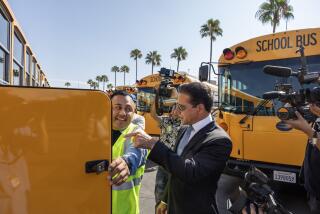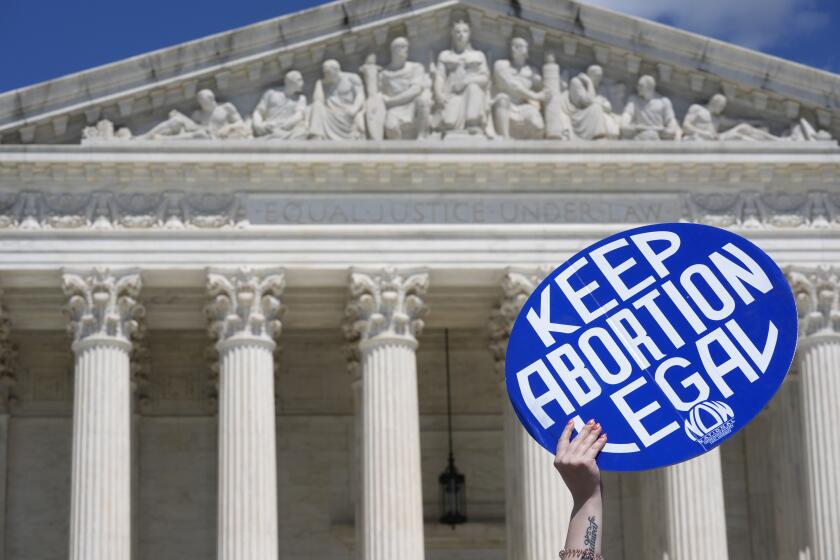Editorial: Why the rush? Hasty L.A. school bond vote leaves many questions unanswered
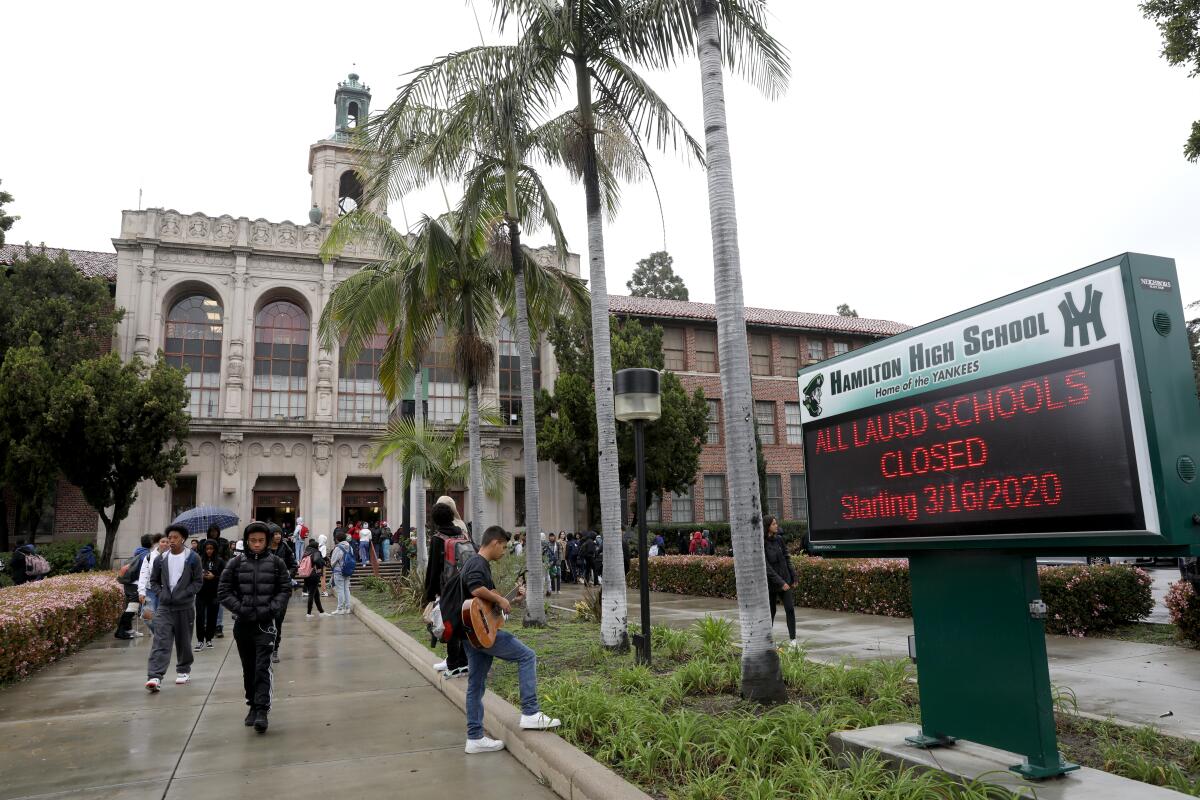
Students and teachers in Los Angeles’ older, more worn-down schools deserve nicer facilities. On top of the basic repair and renovation work that schools always need, Los Angeles Unified School District campuses are short on fully operative air conditioning systems and green spaces. None of this comes free.
So chances are that some kind of bond measure will be necessary to pay for improvements in the years to come. What kind of bond measure? How much will it cost taxpayers? Is it designed to provide the best bang for the buck? How does the district’s declining enrollment affect how much money is needed and how it should be spent? Will charter schools, which are independently operated public schools that educate a fifth of the district’s students, get their fair share?
Those are the questions that should be answered before a bond measure is placed before voters. Unfortunately, the L.A. Unified school board rushed to place a $9-billion bond on the Nov. 5 ballot before fully addressing these questions. The school board voted so late in the game — with only 24 hours’ advance notice, the legal minimum — that even the district’s bond oversight committee could offer no insight on it.
Monday is the first day of class for students at L.A. Unified and other schools around California. Too many kids face hot classrooms that lack adequate cooling.
“While we understand the district’s infrastructure needs are greater than the pool of resources currently available to fund them, the process by which this bond measure was developed and put forward, without consultation of key stakeholders groups such as ourselves — and therefore outside public view — prevents us from providing any meaningful comment,” committee chairman Michael Hamner told the board.
Supt. Alberto Carvalho responded that the concerns of various factions would be considered going forward, according to a report by EdSource. But that’s something that should have happened before a tax this big was placed before voters.
This is the biggest bond the district has ever floated, and it’s more than the state school bond that’s also on the November ballot would provide to K-12 facilities. (The total state bond amount is $10 billion, but $1.5 billion of that is for community colleges.) It would cost commercial and residential property owners an estimated $25 per $100,000 of assessed valuation — not what the property is worth now, but its assessed value, which is almost always lower. For a house assessed as low as $400,000, that’s $100 a year, on top of bonds the district is still paying off.
As California lawmakers negotiate a multibillion-dollar school bond, they should include plenty of money to green up asphalt-dominated schoolyards.
Charter schools also have a valid concern. The bond would set aside $300 million for them, or a little more than 3% of the money even though charters educate 22% of LAUSD students. Maybe they don’t need more money — but shouldn’t they and taxpayers have the time to figure this out before a vote takes place?
Carvalho says the district had to move fast because it was waiting to see how much California would seek for the statewide bond, which wasn’t decided until well into June. The district figures it should be able to get $700 million in matching funds from the state.
In addition to a precarious presidential election and high-stakes U.S House races, California voters in November will also weigh in on a slew of statewide ballot measures that could significantly shape policy.
But Dan Chang, a candidate for school board who opposes the bond, said during a candidate forum that the district still has more than $7 billion in bonds that haven’t been issued yet, from previous measures. District officials say they’ve already committed that money for a variety of projects. Still, Chang said, there is more than enough money that the bond didn’t have to be rushed onto the ballot; in his eyes, the district has time to go through the regular procedures at a later date so that the public has the opportunity to weigh in.
It will be a tough decision for voters who want to support their schools but want to know that the district is transparent about raising and spending money. Perhaps a bond is needed, but the rush to put it on the ballot with almost no notice gets it off to a bad start.
More to Read
A cure for the common opinion
Get thought-provoking perspectives with our weekly newsletter.
You may occasionally receive promotional content from the Los Angeles Times.
